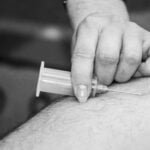
Having the right knowledge and expertise in pediatric respiratory care is crucial in ensuring the well-being of children with respiratory conditions. In this article, we will explore the best practices for pediatric respiratory care, offering valuable insights and practical tips to help healthcare professionals provide the highest level of care for their young patients. By implementing these best practices, you can make a positive impact on the lives of children with respiratory issues and ensure they receive the appropriate treatment and support they need to thrive.
Preventive Measures
Vaccination
Vaccination is a crucial preventive measure for pediatric respiratory care. Ensuring that children receive recommended immunizations can significantly reduce the risk of respiratory infections. Vaccines such as the influenza vaccine and the pneumococcal vaccine can protect against viruses and bacteria that can cause severe respiratory illnesses. By receiving these vaccinations, children are less likely to develop respiratory symptoms and experience complications.
Hand Hygiene
Teaching children the importance of hand hygiene is another key preventive measure in pediatric respiratory care. Regular handwashing with soap and water, or using alcohol-based hand sanitizers when soap and water are not available, can effectively reduce the spread of respiratory infections. Encouraging children to wash their hands before meals, after using the restroom, and after being in public places can help prevent respiratory illnesses.
Clean Environment
Creating and maintaining a clean environment is essential for promoting optimal respiratory health in children. Regular cleaning and disinfection of surfaces, toys, and objects that children frequently come into contact with can help eliminate respiratory irritants and minimize the risk of infections. Additionally, ensuring proper ventilation and air circulation in indoor spaces can help reduce the concentration of respiratory allergens and pollutants.
Diagnosis and Assessment
Recognizing Respiratory Symptoms
Recognizing respiratory symptoms is crucial for timely diagnosis and assessment in pediatric respiratory care. Parents and caregivers should be aware of common respiratory symptoms in children, such as coughing, wheezing, shortness of breath, and chest tightness. Promptly seeking medical attention when these symptoms occur can help in the early detection and management of respiratory conditions.
Physical Examination
A comprehensive physical examination is an important component of pediatric respiratory care. During the examination, healthcare professionals assess the child’s breathing pattern, lung sounds, and overall respiratory function. They may also examine the child’s throat, nose, and ears to rule out any underlying respiratory infections or abnormalities. A thorough physical examination aids in accurate diagnosis and assessment.
Diagnostic Tests
Diagnostic tests play a crucial role in determining the underlying cause of respiratory symptoms in children. Tests such as chest X-rays, pulmonary function tests, and allergy tests can provide valuable insights into the child’s respiratory health. These tests help healthcare professionals identify conditions such as asthma, allergies, pneumonia, or other respiratory disorders. Accurate diagnosis through the use of appropriate diagnostic tests enables targeted treatment and management.

Treatment Options
Medications
Medications are an integral part of the treatment plan for pediatric respiratory care. Depending on the specific respiratory condition, healthcare professionals may prescribe medications such as bronchodilators, corticosteroids, or anti-allergy medications. These medications help alleviate respiratory symptoms, reduce inflammation, and improve lung function. It is essential to follow the prescribed medication regimen consistently and ensure proper administration techniques.
Oxygen Therapy
In certain cases, pediatric respiratory care may involve the use of oxygen therapy. Oxygen therapy provides supplemental oxygen to children who have difficulty breathing or have low oxygen levels. It can improve oxygenation, relieve respiratory distress, and support overall respiratory function. Administering oxygen therapy under the guidance of healthcare professionals ensures optimal oxygen delivery and safety for pediatric patients.
Airway Clearance Techniques
Airway clearance techniques are beneficial for children with conditions that cause excessive mucus production or impaired mucus clearance. These techniques, such as chest physiotherapy, flutter devices, and positive expiratory pressure therapy, help loosen and remove mucus from the airways. By clearing the airways, these techniques enhance respiratory function and reduce the risk of respiratory complications.
Monitoring and Follow-up
Regular Check-ups
Regular check-ups with healthcare professionals are essential for effective monitoring and follow-up in pediatric respiratory care. These check-ups allow healthcare professionals to assess the child’s respiratory health, monitor the effectiveness of treatment strategies, and make any necessary adjustments to the care plan. Regular check-ups provide an opportunity for parents and caregivers to address any concerns and receive guidance on ongoing management.
Spirometry
Spirometry is a diagnostic and monitoring tool that measures lung function. It assesses how much air a child can inhale and exhale and how quickly they can blow air out of their lungs. By regularly performing spirometry tests, healthcare professionals can track changes in lung function over time, monitor the progression of respiratory conditions, and evaluate treatment effectiveness. Spirometry results aid in guiding treatment decisions and optimizing respiratory care.
Peak Flow Monitoring
Peak flow monitoring is another valuable tool for monitoring pediatric respiratory health. It measures the maximum airflow a child can generate when forcefully exhaling. By regularly measuring peak flow, healthcare professionals can identify changes in respiratory function, detect worsening symptoms, and adjust treatment plans accordingly. Peak flow monitoring empowers parents and caregivers to actively participate in their child’s respiratory management.

Education and Support
Empowering Parents and Caregivers
Empowering parents and caregivers with knowledge and skills is vital in pediatric respiratory care. Education about respiratory conditions, treatment options, and preventive measures enables parents to actively participate in their child’s care. Providing information on recognizing symptoms, managing medications, and responding to respiratory emergencies equips parents and caregivers with the confidence and tools to support optimal respiratory health.
Asthma Action Plans
Asthma action plans are personalized guides that outline specific steps to manage asthma symptoms and handle exacerbations. These plans detail daily medications, triggers to avoid, and steps to take during asthma attacks. Providing asthma action plans to parents, caregivers, and older children enhances their understanding of asthma management and promotes proactive measures to prevent respiratory difficulties.
Support Groups
Support groups play a crucial role in pediatric respiratory care by providing emotional support and practical guidance to parents, caregivers, and children. Connecting with others who face similar challenges can alleviate feelings of isolation and provide a platform to share experiences, strategies, and resources. Support groups enhance the overall well-being of families by fostering a sense of community and empowering individuals to navigate the complexities of pediatric respiratory care.
Collaborative Care
Interdisciplinary Approach
Pediatric respiratory care necessitates a multidisciplinary, collaborative approach involving various healthcare professionals. This approach may involve pediatricians, pulmonologists, allergists, nurses, respiratory therapists, and other specialists. By working together, these professionals can pool their expertise, coordinate care plans, and provide comprehensive support to children with respiratory conditions. An interdisciplinary approach enhances treatment outcomes and optimizes pediatric respiratory care.
Involvement of Family
Involving the family in the care of children with respiratory conditions is essential for successful management. Family members play a critical role in implementing preventive measures, administering medications, and monitoring symptoms. By actively involving the family, healthcare professionals can ensure continuity of care, promote adherence to treatment plans, and improve the overall well-being of the child.
Coordination with Schools
Collaboration between healthcare professionals and schools is crucial in pediatric respiratory care. It is important to communicate the child’s respiratory condition, treatment plan, and any necessary accommodations to school staff. By coordinating with schools, healthcare professionals can ensure a safe and supportive environment for children with respiratory conditions. This collaboration helps address potential triggers, develop emergency response plans, and promote the child’s participation in school activities.

Environmental Controls
Identification and Removal of Triggers
Identifying and minimizing exposure to respiratory triggers is essential in pediatric respiratory care. Understanding the specific triggers that exacerbate symptoms, such as allergens, pollutants, or irritants, allows for targeted interventions. Implementing measures to remove triggers, such as using dust mite covers on bedding, maintaining clean indoor air quality, and avoiding tobacco smoke, helps create a healthier environment for children with respiratory conditions.
Air Filtration
Air filtration systems can significantly improve indoor air quality and reduce the concentration of respiratory irritants in the environment. High-efficiency particulate air (HEPA) filters are particularly effective in capturing allergens, pollutants, and other airborne particles that can trigger respiratory symptoms. By investing in air filtration systems, parents and caregivers can create a clean and safe environment that supports optimal respiratory health.
Humidity Control
Maintaining appropriate humidity levels is crucial in pediatric respiratory care. Excessive humidity can promote the growth of mold and dust mites, while low humidity can cause dryness and irritation of the respiratory tract. Monitoring and controlling humidity levels through the use of humidifiers or dehumidifiers can help create an ideal environment for children with respiratory conditions. Balancing humidity promotes respiratory comfort and reduces the risk of symptom exacerbation.
Infection Prevention
Respiratory Syncytial Virus (RSV) Prevention
Preventing respiratory syncytial virus (RSV) infections is crucial in pediatric respiratory care, particularly in infants and young children. Strategies to reduce the risk of RSV include promoting vigilant hand hygiene, avoiding close contact with individuals who have respiratory symptoms, and encouraging respiratory etiquette such as covering the mouth and nose when coughing or sneezing. Additionally, RSV vaccination may be recommended for high-risk infants.
Influenza Prevention
Influenza prevention is another vital aspect of pediatric respiratory care. Annual influenza vaccination is recommended for all children to protect against the influenza virus and minimize the risk of severe respiratory complications. In addition to vaccination, practicing good hand hygiene, avoiding close contact with individuals who have influenza-like symptoms, and following respiratory etiquette contribute to effective influenza prevention.
Isolation Techniques
Implementing appropriate isolation techniques is crucial in preventing the spread of respiratory infections, particularly in healthcare settings. Isolation precautions, such as wearing masks, gloves, and gowns, help limit the transmission of respiratory pathogens. Adhering to proper isolation techniques, combined with diligent hand hygiene and respiratory etiquette, contributes to reducing the risk of healthcare-associated respiratory infections and protecting vulnerable pediatric patients.
Emergency Preparedness
Rescue Medications
Having rescue medications readily available is crucial in emergency situations related to pediatric respiratory care. Quick-relief medications, such as bronchodilators, help alleviate sudden respiratory distress and provide immediate relief during asthma attacks or other acute respiratory episodes. Ensuring access to rescue medications at home, school, and other relevant settings enables prompt intervention and minimizes the potential impact of respiratory emergencies.
Action Plans for Acute Situations
Developing action plans for acute situations is essential in pediatric respiratory care. These plans outline specific steps to take during respiratory exacerbations or emergencies. Parents, caregivers, and older children should be familiar with the action plan and understand when and how to implement it. Action plans not only ensure a timely response to acute respiratory situations but also empower individuals with the knowledge required to manage critical events effectively.
Emergency Equipment
Having standardized emergency equipment readily available is vital in pediatric respiratory care. This equipment may include oxygen delivery systems, nebulizers, pulse oximeters, and resuscitation supplies. Proper maintenance, regular checks, and accessibility of emergency equipment at various locations, such as homes and schools, contribute to effective emergency preparedness and enhance the ability to provide immediate respiratory support when needed.
Follow Evidence-Based Guidelines
National Institute for Health and Care Excellence (NICE) Guidelines
Following evidence-based guidelines, such as those provided by the National Institute for Health and Care Excellence (NICE), is essential in pediatric respiratory care. NICE guidelines offer recommendations based on rigorous research and expert consensus, ensuring that healthcare professionals deliver high-quality, standardized care to children with respiratory conditions. Adhering to NICE guidelines helps optimize outcomes and promotes consistent and effective respiratory care practices.
American Academy of Pediatrics (AAP) Recommendations
The American Academy of Pediatrics (AAP) provides valuable recommendations for pediatric respiratory care. These recommendations cover various aspects of respiratory health, including preventive measures, diagnosis, treatment, and management of acute and chronic respiratory conditions. Healthcare professionals, parents, and caregivers can refer to AAP recommendations to ensure the application of best practices in promoting respiratory well-being among children.
Global Initiative for Asthma (GINA) Guidelines
The Global Initiative for Asthma (GINA) guidelines offer evidence-based recommendations specifically focused on asthma management. Asthma is a common respiratory condition in children, and GINA guidelines provide a comprehensive framework for its prevention, diagnosis, and treatment. Healthcare professionals can utilize GINA guidelines to ensure optimal asthma management, individualized care plans, and effective control of symptoms in pediatric patients.
In conclusion, pediatric respiratory care involves a comprehensive approach that encompasses preventive measures, accurate diagnosis, appropriate treatment options, regular monitoring, education, and collaboration. By following best practices and adhering to evidence-based guidelines, healthcare professionals, parents, caregivers, and educators can prioritize respiratory health and provide the necessary support for children with respiratory conditions. Through a combined effort, we can strive to create an environment that promotes optimal respiratory well-being and enables children to thrive.









